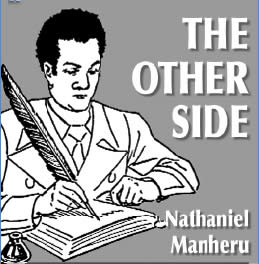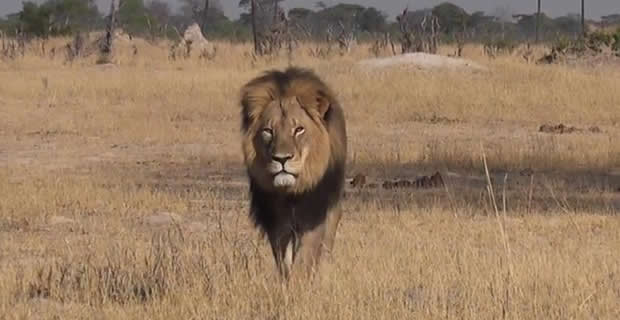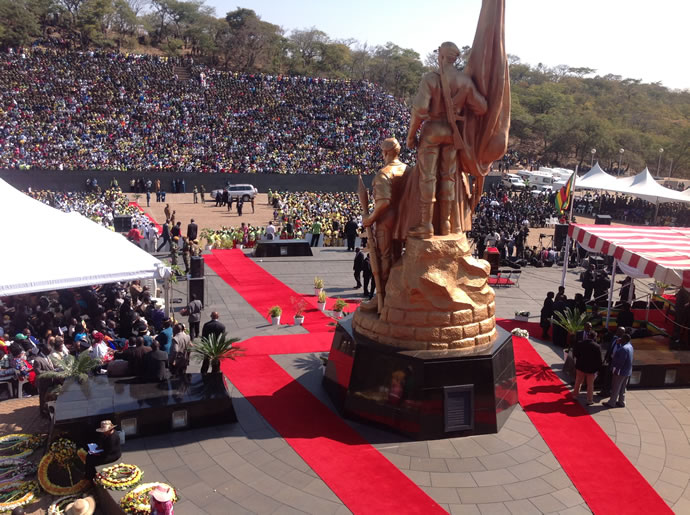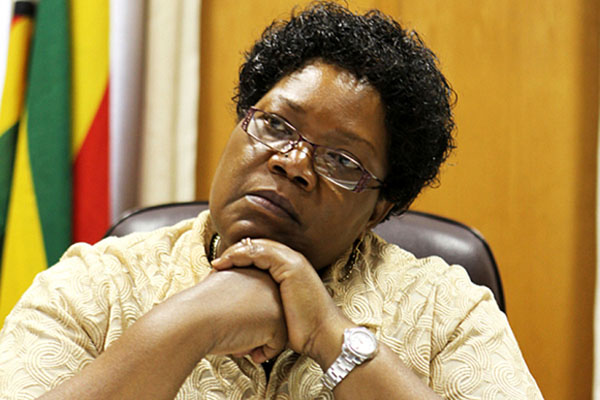Cecil: Fame in Africa’s zoological garden

 Cecil is dead, killed by James Palmer, an American dentist. He was 13. He has followed the death-steps of his namesake, John Cecil Rhodes, who left this earth in 1902. Rhodes sleeps at Matopo, atop that sacred hill. He sleeps well, unmolested, visited daily by kith, by kin, by victims. By all measure, Rhodes flourishes. Short in time, so long in memory. In comparison, Cecil the Lion lies fresh in Caucasian psyche, harried, unburied.
Cecil is dead, killed by James Palmer, an American dentist. He was 13. He has followed the death-steps of his namesake, John Cecil Rhodes, who left this earth in 1902. Rhodes sleeps at Matopo, atop that sacred hill. He sleeps well, unmolested, visited daily by kith, by kin, by victims. By all measure, Rhodes flourishes. Short in time, so long in memory. In comparison, Cecil the Lion lies fresh in Caucasian psyche, harried, unburied.
Judged by the fretful world his death has caused, his spirit wonders restless. The Western world is in deep mourning, its flags fluttering from waists of flagpoles, fluttering at half mast.
The West especially, is in grief, deep grief, mourning the murder of Cecil the Lion.
At 13, it is doubtful that Rhodes’ sighed epitaph: so little time, so much to do, whether such an epitaph fits him. In lion kingdom, 13 marks the denouement. Cecil had lived well, virtually fully, itself a defence of his persecutors.
Lured by Antoinette
Cecil was murdered by a Westerner, James Palmer the American dentist. Most probably bored by the routine of extracting human canines, all to very little blood, the American dentist craved for a real bloody adventure.
The Conradian urge to kill, kill, kill!
He bought a ticket, ignored all American travel advisory warnings, and “braved” a trip to Zimbabwe, itself another “outpost of tyranny” in American political reckoning.
That trip sealed the fate of Cecil. Not even the bright lights of Harare would detain him once landed, this Palmer.
Without any ado at all, he disappeared into the wilds of Hwange, and before long, Cecil was dead, lured from his Hwange habitat by dangled, tantalising chunks of weeping meat he so loved, craved for, chunks he never got without a hard, panting chase. Or that of his bevy of women, themselves she-citizens of this decidedly patrilineal society.
Here was an easy catch for a change, one only requiring that he follows, eagerly, the bait. He followed the bait, followed it until his fore foot, or is it paw? tragically stepped out and beyond the saving ring, the Hwange boundary, into the deadly outer limits of Antoinette Farm, itself part of the enchanted Gwayi River Conservancy.
Cecil? Antoinette? Africa? Lion?
The mind boggles to fathom this naming universe. Like beasts at the dip tank, we all carry tags and bells of history, colonial history, don’t we? Dangling tags and bells tolling our lost innocence as African fauna.
Rhoo(des) Cecil Rhoo
Soon after Cecil was dead, thanks to American bloodlust archery, his ugly mouth, yellowish canines, recklessly gaping, nostrils and mouth oozing scarlet spittle, the last ever before life dries up.
He will never roar again, Cecil, except vicariously through suburban African tiny tots singing “Roar Cecil Roar”, in a white-taught, privileged nursery school. Even if the nursery song is “Rhoo Cecil Rhoo”, who in the history-deaf, leafy suburbs cares? Then on, he enters the hunters’ annals as a prized trophy. In cold compensation, Cecil’s fame has taken a meteoric rise, transfiguring him into a famed dead, a world headline.
Cecil is in the news, implacably so since his murder. He won’t cede the headlines to anyone, to anything. Not even share headlines with anyone, with anything, however pretentiously tragic.
Cecil has turned the world agog.
He is the famed victim, the same way Palmer the dentist is now the most evil part of the whole piece, dragging Theo Bronkhorst — his blameworthy guide — in evil’s tow. Bronkhorst? That rings a bell?
Could he be a scion of the other Bronkhorst who was part of the Boer deputation to Mzilikazi, a deputation behind the first ever agreement between the Ndebele Monarch and his erstwhile mortal enemies as led by Potgieter and Praetorius?
Itself precursor to the Grobler Treaty which, like its negotiator, died unlamented?
Cain of the animal kingdom
Why hasn’t reportage on Cecil woken up to the historical import of the occurrence?
Why is the Western world weeping, the African, even Zimbabwean owners of Cecil indifferent, even irritated by what they see as jaded sensibility, disgusting maudlin sentimentality of the white world?
Why such contrasting dispositions; why howling funerals outside and away from the home of the bereaved? Is Zimbabwe, Africa, less animal; Europe more animal?
And judging by the amounts of tears shed, who owned Cecil?
Who now owns Cecil in death? Or before all else, why Cecil? Is he the first to die, the first to be killed? Why Palmer the dentist? Is he the Cain of the animal world, the first to kill?
You have the mind to raise all these questions, you then realise what disappointment awaits you from the ensuing reportage. Let’s begin the redress, however, modest.
One Theodore Roosevelt
Palmer is not the first, or the only one to kill African fauna. If American tears are genuine, by now her eyes would have been stone-dry from weeping for murdered African fauna.
The carnage started very far back, carnage by American pleasure hunters who took such hunts for sport. It is a very long, gory tale, one with dramatic high points that indict White House.
Yes, White House which today pretends to be moved by the paltry 300 000 petitions from fawning American citizenry. As they weep themselves to sound sleep, weep for poor Cecil, do Americans know a gentleman called Theodore Roosevelt?
He was their president, the 26th in an endless line of leaders. The same family would give America yet another president. Much like the Bushes.
In 1908, their late President, freshly from power, took his son Kermit to East Africa for a safari hunt. He killed; killed, killed and killed African wild animals of all species until his urge for animal blood was gorged, drained to inaction. In between this mighty carnage, deeply inspired by Frederick Selous — our Selous who was the President’s bosom pal — Roosevelt spelt out his view of Africa and Africans, developed his vision of a redeemed Africa, white redeemed. For him, Africa, east Africa typically, was one “vast zoological garden”.
To walk, sorry, hunt through it amounted to treading through “the Pleistocene age”, a concrete recall of Europe’s prehistory. After the safari which covered Tanzania, Kenya, Uganda and Sudan, Roosevelt would write: “The teeming multitudes of wild creatures, the stupendous size of some of them, the terrible nature of others, and the low culture of many of the savage tribes, especially of the hunting tribes, substantially reproduces the conditions of life in Europe as it was led by our ancestors ages before the dawn of anything that could be called civilisation.
“The great beasts that now live in East Africa were in that bygone age represented by close kinsfolk in Europe and in many places, up to the present moment, African man, absolutely naked, and armed as our early Paleolithic ancestors were armed, lives among, and on, and in constant dread of, these beasts, just as was true of the men to whom the cave lion was a nightmare of terror and the mammoth and the wooly. Rhinoceros possible but most formidable prey.” Africa was a vast wilderness of “pure savage men and savage beasts”.
Civilising the garden
The most beneficent development for it was for “peoples of European stock” to bring in and superimpose “the spectacle of a high civilisation” symbolised by the rail and the train.
And the conquest of these vast wastelands, added Roosevelt, was the greatest boon: “Over this people — for its good fortune — Great Britain established a protectorate; and ultimately, in order to get easy access to this new outpost of civilisation in the heart of the Dark Continent, the British Government built a railroad” which was “an embodiment of the eager, masterful, materialistic civilisation of today.” His vision for East Africa was expansively colonial: East Africa “included not only Englishmen, but also Germans and Italians, which is quite as it should be, for at least part of the high inland region of British East Africa can be made one kind of “white man’s country”, and to achieve this white men should work heartily together, doing scrupulous justice to the natives, but remembering that progress and development in this particular kind of new land depend exclusively upon masterful leadership of the whites, and that therefore it is both a calamity and a crime to permit the whites to be riven in sunder by hatreds and jealousies.
“The coast regions of British East Africa are not suited for extensive white settlement; but the hinterland is and there everything should be done to encourage such settlement. Non-white aliens should not be encouraged to settle where they come into rivalry with whites . . .” Do not forget the British had imported hordes of Indians to lay the East African rail network, which is how the issue of zoning settlements came about.
The import of the foregoing is clear, very clear. The whole question of sport and trophy hunting is tied up with the whole ethos of imperialism, tied to a worldview which views Africa as “terra nullus”, or as a zoological zoo crowded by savages who are part of its fauna, and thus who can’t claim dominion over it.
It is a land to conquer, with hunters as forerunners of the conquest, safari-hunting statesmen as makers of colonial states to follow. Above that, it is also a glimpse into human past, a source of scientific sample material for display in institutions like the Smithsonian, museums like the National Museum at Washington, themselves institutions that were associated with Roosevelt’s hunting odyssey.
Where it all started
On the issue of studying human and species origins, Roosevelt was not the only one, not even the pioneering hunter. Back in 1890, on the eve of the conquest of Zimbabwe by Rhodes’ brigands, an American called William Harvey Brown had boarded “Pensacola” to South Africa by sea.
He arrived to a Cape Town sizzling with excitement about the “far North”, the fabulous “land of Ophir” which was there for white taking. He wrote: “To the north, in the neighbourhood of the Zambesi River, lay a country, healthful, rich in mineral deposits, inhabited in ancient times by some unknown though civilised race, but now in the hands of a savage potentate, called Lo Bengula”.
He called it an “unclaimed territory” and instantly decided to join Rhodes’ column in laying claim to it. And because the original mission had to do with the Smithsonian Institute, Harvey Brown was quick to conclude conquest and “zoological collection” were sibling pursuits.
Like Roosevelt, he was also attached to the National Museum at Washington. Alongside other Americans like Heany, Harvey Brown embodied the fusion of hunting, zoological collections and conquest. The animals the conquering column brought down for the pot became a source of specimen collections for the American museum.
To this day, our animals are there in their museums, themselves the acme of occupation and reminder of American link to our colonial subjugation. From that role Harvey earned himself another middle name, William Harvey “Curio” Brown.
Assessing British tears
But these are the Americans, how about the British? Can they be left to shed tears over Cecil? And what do we call their tears: shark or crocodile tears? I have a question for mourning Britishers, experimenting Oxford included.
In their experiments and tearful remembrance of Cecil, would they know a gentleman called Lord Randolph S. Churchill? I am sure they do, he being father to their all-time, all-seasons hero Winston Churchill.
He was here, here in Zimbabwe in 1891, barely a year after our conquest, to hunt and to gold search. Besides, he was a shareholder in the British South Africa Company, the colonising corporate outfit. Like Roosevelt, he slaughtered call manner of fauna as he trekked up north, all the time wondering why such “absolute fairyland” had to have “a few ugly naked Kaffirs” for fairies!
He hunted with the legendary Lee, one white man who had been attested into Ndebele society and cultural ways. But his entire escapade to Zimbabwe revolved around assessing Zimbabwe for occupation and for mineral exploitation.
Hunting allowed him to gauge the climate, assess the dutifulness of natives embodied in his man-servant “Tiriki” as a servile class ready to do the white master’s bidding. Again hunting and the entire imperial proposition stand enmeshed.
Successive hunting Nimrods
I could go on and on, but I can’t. I have to round up. Thee exploitation of African fauna starts as early as the 1840s, with vanguard hunters like Roualeyn Gordon-Cumming, William Cotton Oswell, William Charles Baldwin, Jan Viljoen, Piet Jacobs, Henry Hartley, George Wood, and much later Hans Lee, Weestbeech, George Arthur Phillips, Edward Chapman, William Finaughty and Thomas Leask, the last batch representing “nimrods” of the 1860s.
The seventies saw the rise of big hunters like FC Selous. The figures of their haul are staggering. Illustratively Finnaughty accounted for 500 elephants in his five-year hunting career. Henry Hartley accounted for 1 200 elephants in 30 years. Chapman secured over 5 000 pounds of ivory. Such that by the early 1870s, all big game had withdrawn up north, into tsetse fly area, as a result of hunting pressure.
When holy men join the plunder
Even missionaries join in the loot as reveals the following report from Father Depelchin, writing from Matabeleland in 1879: “At the present moment most of the men are away from the town, hunting elephant, giraffe, buck, lion and leopard. The hides will be sold to the English traders living in Shoshong. With my own eyes I saw heaps of skins in front of the Protestant minister’s door; because in Africa the Protestant minister has to attend not only to the progress of the Gospel, but also to the development of English trade.” Father Croonenberghs’ conclusion on Protestantism is no less damning: “I would not wish to criticise the Protestant ministers of the London Missionary Society. But these gentlemen themselves agree that their activities among the natives have been diplomatic and commercial rather than moral and religious”. He quantifies the loot of fauna from Matabeleland part of Zimbabwe by 1879: “Three months ago a load of 6 000lbs of Ivory left Gubuluwayo. During our own journey northwards from the Transvaal to Soshong, we met several wagons carrying between them all, almost 20 000 lb. of elephant ivory. You can see that, if hunting continues in this way, not one elephant will remain in this part of the country before very long. Then the hunters will have to push further north beyond the Zambesi and up into the very heart of Africa”.
Trophy hunting as civilisation
Yet even this missionary concern does not go deep enough, relative to larger imperial considerations to which the church is a cog. Father Croonenberghs is quick to qualify his condemnation of this pillage of Zimbabwean fauna: “We, however, should be grateful, because it is the elephant hunters, English and Boers, who have opened up Southern Africa as they came seeking for Ivory.
In this way they became the first pioneers of civilisation, in the colonies of Natal, the Orange River, the Transvaal, Damara, etc, etc. What a strange thing it is! The old tracks, trodden by wild elephants through the forest, become gradually the hunter’s track, then the wagon tracks, then coach tracks, and finally railway track”. As with political potentates, the abuse of Zimbabwean fauna is viewed as a stage in the evolution of civilisation of the country!
When a savage shows the way
The amazing thing is that Lobengula, the “ savage” King takes bold steps to protect the dwindling fauna. He evolves a hunting policy which introduced hunting seasons, geographical quotas for hunters, control of hunters admitted into the country, protects certain species from hunting and introduces a royal herd. Even the two priests hail this new policy “by a savage” is the first of its kind in the whole world. To this day, our wildlife management philosophy builds of Lobengula’s wisdom!
In the footsteps of Baboon and Cigar
I am told that besides Bronkhorst is his employee, Honest Trymore Ndlovu. It is typical set up, all from history. Each hunter had a native aide in tow, often renaming him like they rename the habitat of Cecil. Roualeyn Gordon Cumming had a Hottentot after-rider he renamed Hendrik. Fatefully he was snatched and eaten by a lion along the Limpopo, as his master slept. To his credit, his master avenged his death, ensuring Africa lost a citizen and another lion. That was on the night of 29 August, 1847.
Hans Lee would not be bothered to find a good name for his African gun-carrier. He simply called him “Baboon”, a name that stuck to his last day on earth, indeed a name that fastened him to the fauna his master hunted down. William Finaughty had his own Hottentot. He named him “Cigar”. But Cigar would grow into a big hunter. He taught Selous to shoot elephant, then disappeared into oblivion, having given his student world fame and an American president for a friend. Well, we have evolved, haven’t we. It is a great achievement to retain your name as Ndlovu (Elephant!), although I am not so sure we are any better for being named “Honest” and “Trymore”. Especially after Cecil!
What colour are the tears?
Gentle reader, I leave you to judge the colour of American and British tears, to judge western tears on this one death. Do they mean it? Is this an aberration when read against history? Is Palmer a freak, the death of Cecil a new fate? Whose lion is Cecil? Have they ever granted us ownership of Africa’s fauna? Or we are part of it, in which case a hyena cannot own a jackal? Why do I sense a whiff of proprietorship in this fawned concern? A sense that “our” lion has died, on the part of Westerners? Is this not what it at the heart of the war for control and ownership of conservancies? With the Germans, the French, etc, etc? And that we have not wailed at the death of our Cecil, mourned that our Cecil no longer “Rhoos”, have we not, by this mighty dereliction of refined sensibility, abnegated ownership and our entitlements over Cecil. We did not mourn it. We don’t need it, miss it. Europeans, westerners did, do. Surely we must hand over these beasts to those who know how to kill them, and weep for them! Or are we going to be an African dog in the manger, blocking others from accessing what we don’t need? White House is exercised. It has since received over 300 000 petitioning signatures. It is required by law to pronounce itself on this matter which has galvanised public opinion. A white American guns down 9 blacks, only a handful of signatures reach White House. Shame in life, no fame in death! Unlike Cecil who beats us, we blacks!
Man Friday is set to be eaten!
Whitehall is helping us with measures to protect lions and other species. Sanctions won’t constrain the British on this one. Some animal do-gooders are ready to erect a monument in honour of Cecil. America is considering breaking its constitution which disallows its citizen from being tried in a foreign court, all to secure justice for Cecil. Palmer might hobble into our courts, leg irons chiming! They won’t break that law for the dead Iraqis, for Zimbabweans blighted by ZDERA. But for Cecil. The President has been petitioned by western animal lovers. Stop this killing, it says. Stop this trophy hunting business! Soon, a convention banning trophy-hunting shall be passed, one that will put our wildlife beyond our governance, make it a property of whining animal lovers who cannot count how many legs a lion has, or believe that it eats humans. It has already happened with Ivory, which is now staked in our vaults, beseeching a market that CITES has killed.
A resource we can’t sell. So what use are elephants to us? We have to keep them, suffer them for white viewing! So the lions shall multiply. And like Hendrik, Cecil’s over-abundant kind will start snatching us from fire sides, munch us, hopefully to be avenged by another Roosevelt, if he resurrects. But give it to Cecil: he has put us on the map. We needed billions to be half as famous. Cecil the white man’s lion. It is a sordid game.
Icho!










Comments